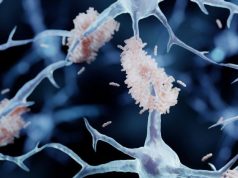Vasomotor symptoms in women at midlife linked to greater white matter hyperintensity volume
MONDAY, Oct. 17, 2022 (HealthDay News) — Menopausal vasomotor symptoms (VMS), particularly occurring during sleep, are associated with greater white matter hyperintensity volume (WMHV), according to a study published online Oct. 12 in Neurology.
Rebecca C. Thurston, Ph.D., from the University of Pittsburgh, and colleagues assessed whether VMS are associated with greater WMHV among midlife women. The analysis included 226 women (aged 45 to 67 years) free of hormone therapy. Linear regression models adjusted for age, race, education, smoking, body mass index, blood pressure, insulin resistance, and lipids were used to identify associations between VMS (24-hour, wake, and sleep VMS, with wake and sleep intervals defined by actigraphy) and whole-brain WMHV.
The researchers found that physiologically assessed VMS were associated with greater whole-brain WMHV in multivariable models. The strongest associations were seen for sleep VMS. Other covariates, including actigraphy-assessed sleep (wake after sleep onset), did not explain these associations. Sleep VMS were associated with deep WMHV, periventricular WMHV, and frontal lobe WMHV.
“These results call into question the common perception that hot flashes and night sweats are benign symptoms that don’t have much importance in women’s medical care and underscore the potential links of these symptoms to brain health,” Thurston said in a statement. “Hot flashes have the potential to serve as a midlife marker of brain health in women that may ultimately help identify women who are more likely to have poor brain health as they age.”
Abstract/Full Text (subscription or payment may be required)
Copyright © 2022 HealthDay. All rights reserved.








